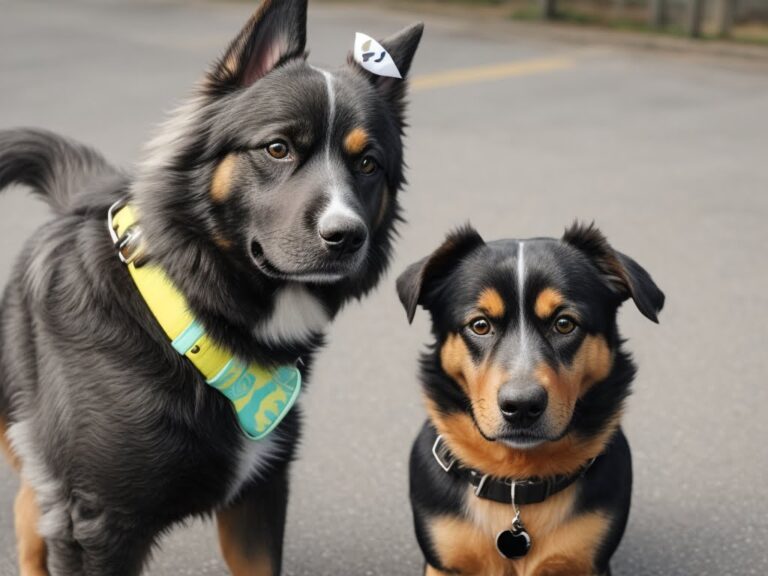Dogs are social animals, but sometimes they can be too friendly or aggressive towards strangers. This can cause problems for both the dog and the owner, especially if the stranger is afraid of dogs or reacts negatively. That’s why it’s important to train your dog to ignore strangers and focus on you instead.
In this article, we will show you how to train your dog to ignore strangers using different methods and techniques. We will also explain the benefits of this training and the common mistakes to avoid. By following our tips, you will be able to teach your dog to be calm and confident around new people, without losing their natural curiosity and enthusiasm.
Is It Too Late To Socialize My Dog?
No, it’s never too late to socialize your dog. While early socialization is ideal, older dogs can still benefit from exposure to various environments, people, and other animals. Take it slow and be patient, gradually introducing your dog to new experiences in a controlled and positive manner. Remember, each dog is unique, so tailor the socialization process to their individual comfort level and needs. Seek guidance from a professional dog trainer if you’re unsure how to approach socialization with an older dog.
How Do I Train My Dog To Ignore Other Dogs And People?
Training your dog to ignore other dogs and people requires patience and consistency. Here are some steps you can take:
- Start with Basic Commands: Ensure your dog is well-versed in basic commands like “sit,” “stay,” and “leave it.” These commands form the foundation for more complex behaviors.
- Use Positive Reinforcement: Reward your dog when they successfully ignore other dogs or people. Use treats, praise, and petting to reinforce the behavior.
- Gradual Exposure: Begin with controlled situations and gradually expose your dog to more distractions. For example, start in a quiet area and then move to busier environments.
- Practice Leash Manners: Work on leash training to prevent your dog from lunging or pulling towards others. Use a sturdy leash and harness for better control.
- Redirect Attention: If your dog starts fixating on another dog or person, use a command like “look at me” or “leave it” to redirect their attention back to you.
- Avoid Punishment: Avoid scolding or punishing your dog for showing interest in others. Instead, focus on positive reinforcement for desired behavior.
- Professional Training: Consider enrolling your dog in a training class or seeking guidance from a professional dog trainer, especially if the behavior persists.
- Consistent Socialization: Continue socializing your dog with controlled interactions to reinforce good behavior around other dogs and people.
How Do I Desensitize My Dog To Visitors?
Points to add in this section:
- Guests are a break in the normal routine
- Talk to your guest(s) in advance
- Prepare your dog in advance of visitors
- Use a dog gate or barrier
- Create a happy distance
- Give your dog something to do
- Doorbell training
Why Does My Dog Go Crazy When He Sees Another Dog?
Desensitizing your dog to visitors can help reduce anxiety and aggression. Here are some effective techniques to consider:
- Acknowledge the Disruption: Understand that guests disrupt the normal routine for your dog. This awareness can help you plan and prepare for their arrival.
- Prep Your Guests: Brief your guests in advance about your dog’s behavior and any specific instructions. This ensures that everyone is on the same page.
- Prep Your Dog: Before your guests arrive, spend some time with your dog to help them burn off excess energy. A tired dog is more likely to be calm and receptive.
- Use a Dog Gate or Barrier: Using a physical barrier like a dog gate can give your dog a sense of control and create a safe space for them.
- Establish a Happy Distance: Initially, keep your dog at a comfortable distance from the guests. This allows them to observe without feeling overwhelmed.
- Engagement and Diversion: Provide your dog with interactive toys or engage them in a favorite activity. This redirects their focus and helps keep them calm.
- Doorbell Training: Practice ringing the doorbell or having someone knock on the door, rewarding your dog for calm behavior. This conditions them to associate these sounds with positive experiences.
Remember, desensitization takes time and patience. Gradually exposing your dog to visitors and rewarding calm behavior will help them feel more at ease in these situations. If your dog’s anxiety or aggression persists, consider seeking guidance from a professional dog trainer or behaviorist.
Conclusion
In conclusion, teaching your dog to ignore strangers is a valuable skill that fosters a harmonious environment for both your pet and those around. Their powerful sensory abilities, including sight, hearing, and smell, make them keen observers. Establishing your authority through assertive commands is crucial, especially for dogs prone to extreme reactions.
By incorporating patience and consistency, you can guide your furry companion towards more composed interactions. The guidance of expert trainers from DMT Dog Training can be instrumental in unlocking your dog’s full potential. Remember, it’s never too late to socialize your dog, and older dogs can benefit from exposure to new environments and experiences.
Desensitizing your dog to visitors is another vital aspect of their training. Recognizing that guests disrupt the routine, preparing them in advance, and establishing a happy distance are effective strategies. Engaging your dog with interactive toys and doorbell training can also help redirect their focus.
Ultimately, a well-mannered and socially adept canine companion is a testament to the care and effort invested in their training. Seek professional guidance if needed, and continue reinforcing positive behaviors for a confident and composed pet.


